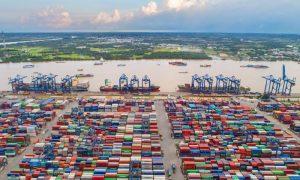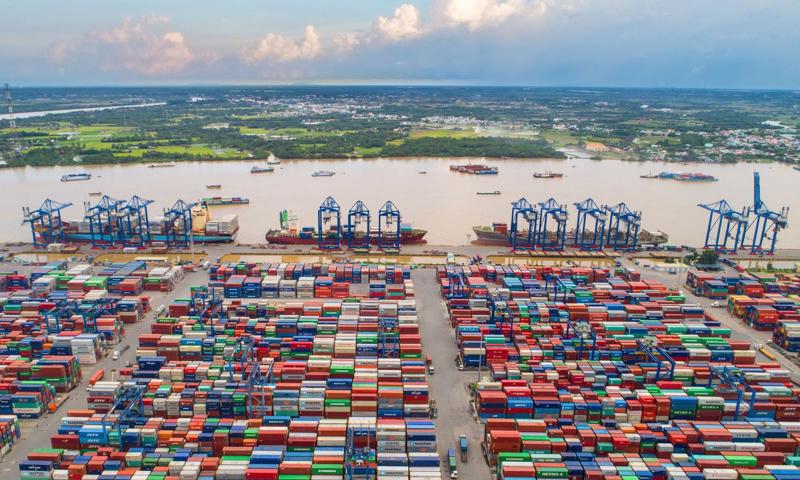How Ho Chi Minh City Utilizes Its Seaport Infrastructure Fees
Ho Chi Minh City has implemented a seaport infrastructure fee to improve traffic connections and enhance logistics efficiency around its port system. Since the fee collection began, the city has generated a significant budget used exclusively for upgrading transport infrastructure, supporting port operations, and improving the flow of goods. This policy aims to create a more synchronized, efficient, and sustainable logistics environment for businesses and the wider economy.

Purpose of the Seaport Infrastructure Fee
The fee is designed to ensure that companies and organizations benefiting from port services contribute to maintaining and developing the surrounding infrastructure. As cargo volume grows each year, existing roads and port-related facilities face increasing pressure. The revenue collected helps Ho Chi Minh City:
-
Upgrade key roads connecting to ports
-
Build new bridges and intersections
-
Reduce congestion in port gateways
-
Improve the transportation network for import–export activities
How the Fee Collection System Works
Ho Chi Minh City uses a fully digital, automated system that allows businesses to declare information and pay fees online. The system operates 24/7 and integrates directly with customs procedures, making the process quick and transparent. After declarations are approved, companies can complete payment through banking applications or electronic methods without visiting any physical office.
This approach enhances efficiency, reduces manual processing, and minimizes wait times for businesses involved in logistics and international shipping.
Fee Structure
The fee varies depending on the type of goods, type of container, and location of customs declaration. Common categories include:
-
Containerized cargo (20ft and 40ft)
-
Bulk and liquid cargo
-
Goods transiting or transshipping through the port
-
Goods imported or exported within Ho Chi Minh City
Certain cargo groups, such as goods for social welfare, national defense, or humanitarian purposes, are exempt from the fee.
How the Revenue Is Used
The collected seaport infrastructure fees are allocated to major transport and logistics development projects in Ho Chi Minh City. Key focus areas include:
1. Building and expanding port-connecting roads
Several important routes around Cat Lai, Hiep Phuoc, and the Saigon River port areas are being upgraded to reduce congestion and support higher cargo throughput.
2. Developing ring roads and regional connectivity
Projects such as segments of Ring Road 2 help create better circulation around the city and ease pressure on inner-city traffic.
3. Constructing new bridges and interchanges
Investments in bridges and intersections support smoother traffic flows, shorten travel times, and enhance safety for heavy-duty vehicles transporting goods.
4. Enhancing digital infrastructure
A portion of the revenue supports the maintenance and improvement of the city’s digital systems for customs, logistics management, and online fee collection.
Impact on Logistics and Businesses
The seaport infrastructure fee brings both immediate and long-term benefits to the logistics sector:
-
Greater traffic efficiency: Upgraded roads reduce congestion and delays for trucks entering or leaving port zones.
-
Lower logistics costs in the long run: Better infrastructure cuts travel time and fuel consumption.
-
Improved port competitiveness: When connectivity is enhanced, goods can move faster, supporting trade and investment.
-
More transparent procedures: Automated systems reduce paperwork and help businesses manage shipping processes more easily.
Challenges and Future Development
While the fee supports major infrastructure improvements, it also requires ongoing coordination between government agencies, port operators, and customs authorities. The city aims to:
-
Continue upgrading the digital fee management system
-
Ensure timely completion of infrastructure projects
-
Maintain transparency in fund allocation
-
Reduce bottlenecks and expand port-related traffic capacity
Long-term success depends on continued investment and effective planning to keep up with the city’s rapid trade growth.
Conclusion
The seaport infrastructure fee is a key financial tool helping Ho Chi Minh City modernize its logistics network. By reinvesting the revenue into roads, bridges, digital systems, and regional connectivity, the city aims to build a stronger foundation for import–export activities and support sustainable economic development. This approach not only benefits businesses today but also creates long-lasting improvements for the future of Vietnam’s logistics sector.
Read more:
Vận Chuyển Đường Biển Đi Cảng Cebu Nhanh Chóng – Uy Tín – Tiết Kiệm
Dịch vụ vận chuyển đi New Zealand tại Hải Phòng

